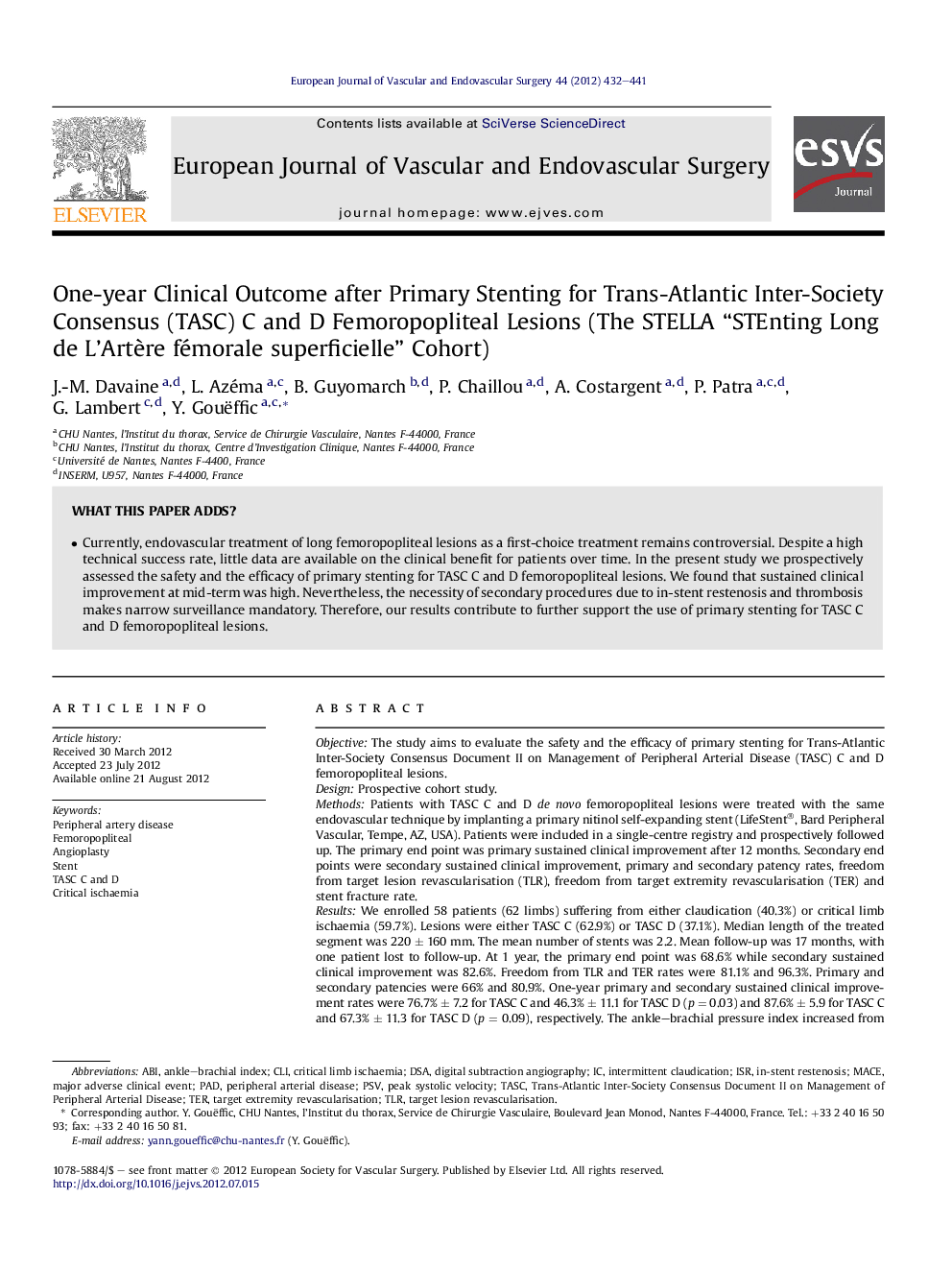| کد مقاله | کد نشریه | سال انتشار | مقاله انگلیسی | نسخه تمام متن |
|---|---|---|---|---|
| 2913134 | 1575473 | 2012 | 10 صفحه PDF | دانلود رایگان |

ObjectiveThe study aims to evaluate the safety and the efficacy of primary stenting for Trans-Atlantic Inter-Society Consensus Document II on Management of Peripheral Arterial Disease (TASC) C and D femoropopliteal lesions.DesignProspective cohort study.MethodsPatients with TASC C and D de novo femoropopliteal lesions were treated with the same endovascular technique by implanting a primary nitinol self-expanding stent (LifeStent®, Bard Peripheral Vascular, Tempe, AZ, USA). Patients were included in a single-centre registry and prospectively followed up. The primary end point was primary sustained clinical improvement after 12 months. Secondary end points were secondary sustained clinical improvement, primary and secondary patency rates, freedom from target lesion revascularisation (TLR), freedom from target extremity revascularisation (TER) and stent fracture rate.ResultsWe enrolled 58 patients (62 limbs) suffering from either claudication (40.3%) or critical limb ischaemia (59.7%). Lesions were either TASC C (62.9%) or TASC D (37.1%). Median length of the treated segment was 220 ± 160 mm. The mean number of stents was 2.2. Mean follow-up was 17 months, with one patient lost to follow-up. At 1 year, the primary end point was 68.6% while secondary sustained clinical improvement was 82.6%. Freedom from TLR and TER rates were 81.1% and 96.3%. Primary and secondary patencies were 66% and 80.9%. One-year primary and secondary sustained clinical improvement rates were 76.7% ± 7.2 for TASC C and 46.3% ± 11.1 for TASC D (p = 0.03) and 87.6% ± 5.9 for TASC C and 67.3% ± 11.3 for TASC D (p = 0.09), respectively. The ankle–brachial pressure index increased from 0.58 to 0.94 (p = 0.001) at 1 year and the incidence of in-stent restenosis (ISR) was 19.3%. Stent fracture and disconnection rate was 17.7%.ConclusionsPrimary stenting of TASC C and D lesions appears to be safe and efficient given the high-sustained clinical improvement and the low rate of ISR observed in our study. Endovascular treatment of such long and severe lesions exposes to high rate of stent fractures, which should not be a concern given their low clinical impact.
Journal: European Journal of Vascular and Endovascular Surgery - Volume 44, Issue 4, October 2012, Pages 432–441